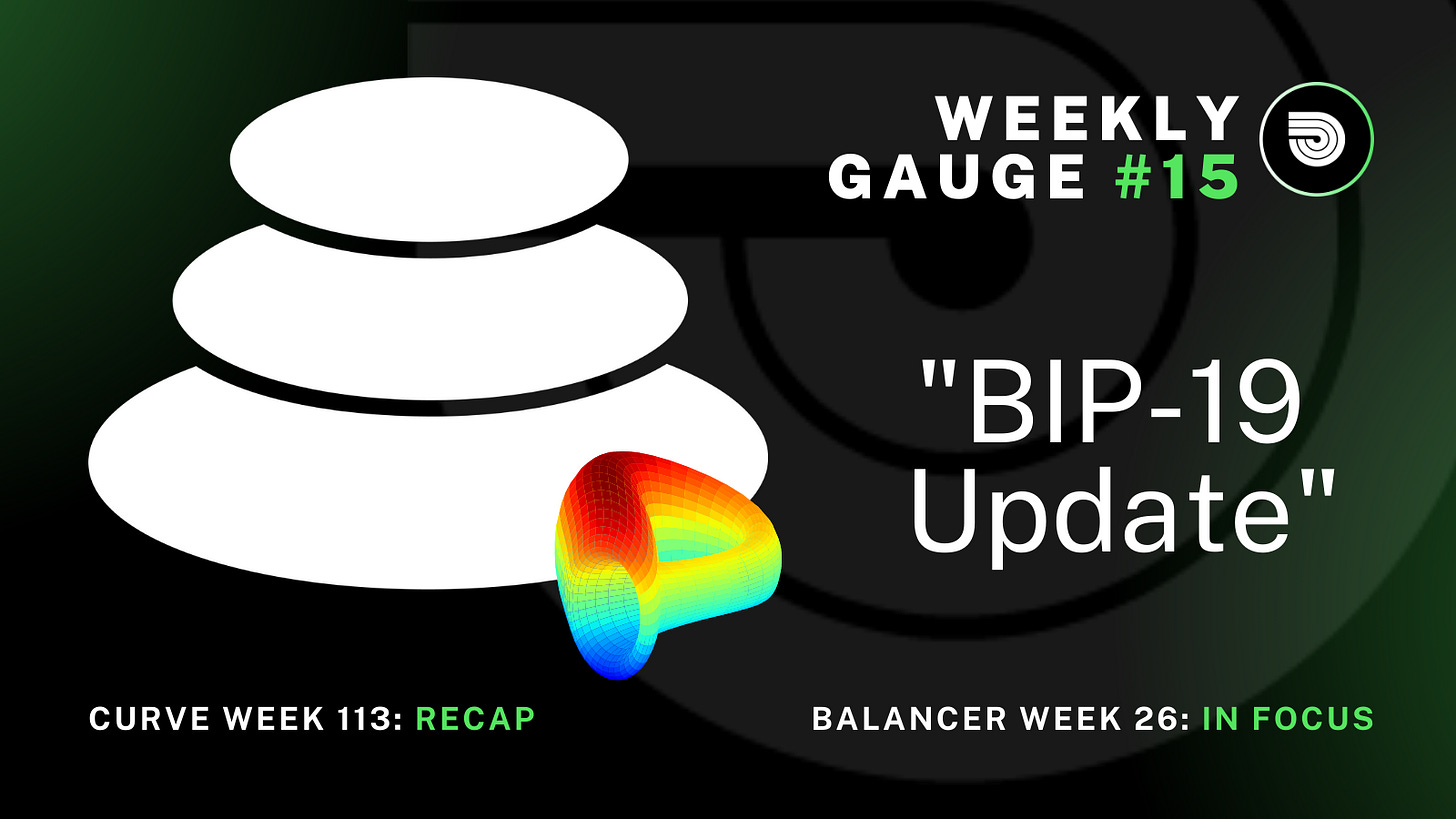Weekly Gauge #15 : BIP-19 Update
The goal of this article is to analyze the current state of the service providers contributing to the Core Pool Incentive program highlighted in BIP-19.
Since BIP-19's implementation, Balancer’s incentivization campaign to lock BPT and develop its gauge ecosystem has reached several milestones in terms of locked supply. However, it is still in the process of creating a sustainable middle ground between decentralization and value creation.
The decision to convert yield-bearing fees into bribes to incentivize the core pools, proportionally to their TVL, proved to be an efficient option. It increased the bribes value, which in turn, incentivized BAL holders to lock as well as increased the voting share captured by the core pools. This means that yield-bearing pools are now becoming self-sustainable. During the last round, it is a total of almost 40% of votes or 3.5M veBAL distributed between all core pools.
Round 8 (Aura layer) : wstETH/wETH gauge bribe
To date, 30% of the voting power remains misaligned with the sustainability objectives of the gauge tokenomic implemented by Balancer. This continues to be directed to pools generating little or no fees for the project. In addition, the BAL rewards captured by the malicious player are constantly locked for veBAL, thus, increasing the threat for Balancer even more.
In order to dilute this negative impact and empower the most aligned participants, here are some takeaways from the Paladin team:
In this example, Aura takes 20% of fees generated by the pool. However, the platform voting power is responsible for barely 10% of the emissions captured by the pool.
On the other hand, we’ve highlighted earlier that one major synergy between Curve and Convex is that over 50% of the veCRV voting power is controlled by vlCVX holders. On top of that, half of this voting power is being shared between various delegation addresses. In practice, this token distribution prevents an isolated player from taking over the CRV emission.
If we apply this reasoning to the current Balancer situation to counteract the supply distribution problem, the use of liquid wrappers should be bootstrapped and the impact of organic veBALs diluted.
Recently, both Aura’s and Balancer’s layers of bribes combined have been generating around 700k$ of incentives by rounds, while the total value of emission sits around 1.5M$ bi-weekly. Moreover, we know that around 30% of the BAL emission is captured by a selfish coalition of players which lowers the available BAL emissions to ~1M$.
In order to reduce the selfish coalition dominance, it is necessary to enhance Aura’s role within the Balancer governance framework, and rebalance an equilibrium between both layer incentives and token distribution.
In the same way that an isolated player can threaten operational risks on the BAL emission, the Hidden Hand’s monopoly over the bribe market would be at risk for the whole system. Considering that the platform facilitates the same mechanisms that we’ve highlighted on Votium in Weekly Gauge #13, this can lead to a bad distribution of bribes according to the underlying revenue generated by pools.
The plurality of delegation addresses available for liquid wrapper holders is thus essential for the token distribution. Actually, we can assume that if a voter delegates its power this means that it is not a liquidity provider itself and then doesn’t care about the BAL emission among the pools. Thanks to variable rate marketplaces such as Votium or Hidden Hand it is possible to flatten the market price of bribes and make sure that all delegated votes generate approximately the same yield.
Finally, Paladin’s Quest entered the game as the ultimate key to make this DeFi stack (or flywheel) the most efficient for all stakeholders. With a focus on intrinsic value creation and sustainability, this tool represents the fixed-rate part needed by every project to mitigate the risk of spending more than the emission captured.











